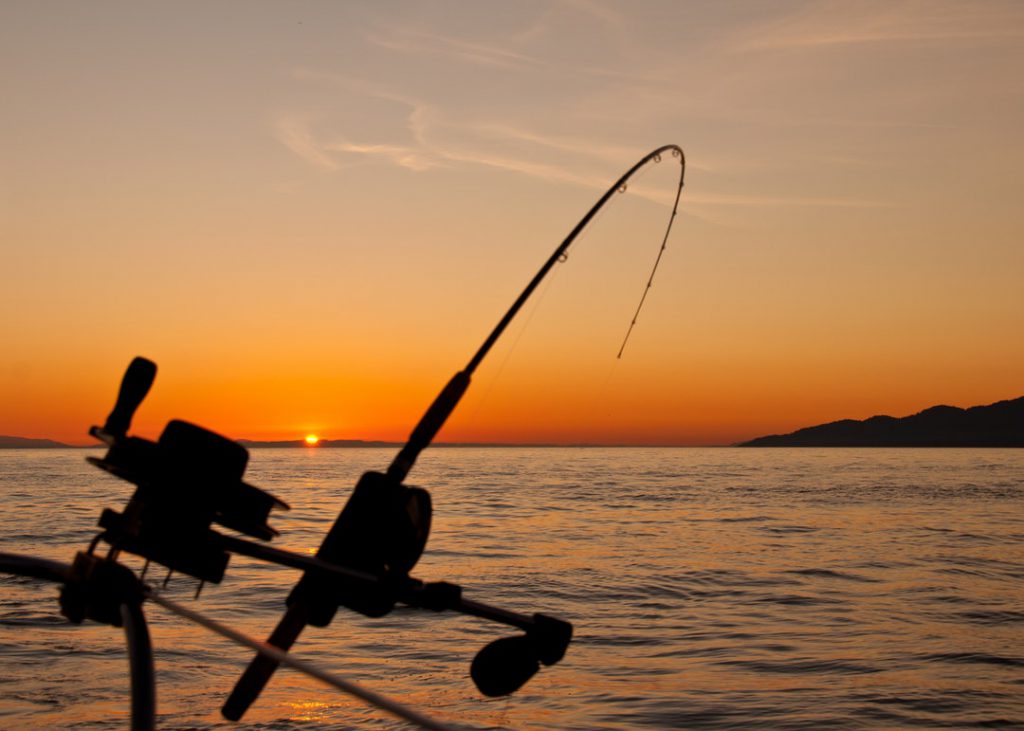
One of the most common types of tuna you’ll find in the waters off of Galveston, TX are yellowfin tuna. This is great news for tuna-lovers because yellowfin tuna can grow up to 7 feet in length and weigh up to 450 pounds.
According to culinary experts, yellowfin tuna is a desirable catch because it is low in oil and has a higher flavor profile than albacore tuna.
To catch such a large fish, you’ll need to know a lot about tuna fishing.
Read on for our best 11 tips on tuna fishing so that you can fish like a professional!
1. Go Tuna Fishing After the Sun Goes Down
Yellowfin tuna have a habit of swimming down to the depths when the sun is high in the sky. That doesn’t mean that you won’t be able to lure them upwards but that you’ll probably have to work harder to catch less fish during the day.
2. Pay Attention to Temperature
Fortunately, in Galveston, we don’t have to wait for summer to reach the high temperatures tuna love. The water temperature of the Gulf rarely dips lower than 50 degrees in the coldest months of the year.
You’ll see the most activity on days when the water is between 70 and 90 degrees, but note that bigger yellowfin tuna prefer temperatures a bit cooler.
3. Use the Right Bait
Live bait is your best bet for catching tuna and you’re going to want to use what’s most abundant at that time. What you’ll want to look for are blue runners, herring, or mullet. Lures and dead bait will work if you find a school that is deep in the midst of a feeding frenzy.
Bring a variety of bait and lures. It can be difficult to predict exactly what tuna will be feeding on when you head out and you want your bait to match whatever it is that they’re already eating.
4. Balance Your Chumming
Chumming live bait is a great way to attract the attention of a school and bring them closer to the surface. While trolling, cast a dip net to pick up live baitfish. Throw them, bit by bit, off the back of the boat.
Be careful not to over-chum. You don’t want to feed your school so much that they have no interest in whatever’s on your hook. You may also want to consider hooking something bigger than what you’re throwing out so that it’s more tantalizing to the tuna.
5. Seek Out Underwater Structures
Yellowfin tuna love underwater structures like reefs, shoals, and ledges because that’s where their food tends to hang out. If you’re not having any luck in open waters, head to areas that offer plenty of places for baitfish to hide out.
6. Watch for Seabirds
If you’re struggling to locate a school, it’s probably because you can’t find the bait. Keep an eye on seabirds and head towards them when they feed. They’ve found the bait which means they may have found the tuna.
7. Troll with the Current
Yellowfin tuna tend to swim with the breaks created by temperature, salinity, tide, and current. These breaks are often visible from the surface and you should troll alongside them.
8. Hope for a Surface Catch but Prepare for the Depths
As with most tuna fish, yellowfins tend to send their smaller, more agile fish up towards the surface to feed. The biggest of the pack will stay down below, feeding off of the weaker baitfish that don’t move as quickly.
Because they’re so large, it’s ideal to bring them as close to the surface before muscling them in. However, you shouldn’t bank on this outcome.
It’s best to use a reel spooled with a 130-pound braid when you’re trying to bring in those deep swimmers. Make sure at least one of your poles is equipped for the depths.
9. Go with a Group of Anglers
When you get that first bite, you’re going to want to hold off a moment. Give more members of the school a chance to notice some of your other lines before you begin the fight.
The best way to handle this is to go with a group of anglers. Since things can turn from slow sailing to rapid reeling in a matter of minutes, your best bet is to have one angler per pole.
10. Keep Your Energy Up
Yellowfin tuna don’t go down without a fight, especially when you’re lucky enough to hook a big one. This isn’t the kind of fishing trip to make with a beer in one hand and a cigar in the other!
Get a good night’s rest. Eat a high-protein, high-carb meal. Drink a ton of water.
In other words, do whatever it takes to have a high-energy day. Once they start biting, you’re going to get a real workout!
11. Set Sail with Professionals
If you’re heading out in search of some of the most formidable beasts of the Gulf, do so with the help of professionals. Experienced, licensed captains will know where to go and when. They’ll also have the best boat for the job and know what to do in an emergency situation.
The Gulf is no joke and if your experience is on the lower side, it is both safer and more enjoyable to spend your tuna fishing trip with the professionals.
Find Your Captain and Book Your Tuna Fishing Trip
Are you ready to have the tuna fishing experience of a lifetime? Whether you’ve never fished for tuna before or you’re a total pro, you’ll have a great time with a captain from Wave Dancer Charters in Galveston, TX.
Why wait? Book your trip today!

We’re just starting out with fishing, and to be honest we haven’t caught anything substantial. Maybe things can turn around if I follow your tips! Thanks for this.